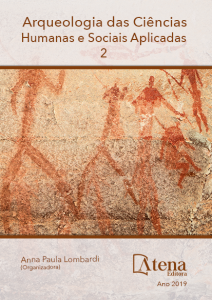
CITY MARKETING, TURISMO E IDENTIDADE: ENTRE A PERCEPÇÃO E A POTENCIALIZAÇÃO DOS ESPAÇOS DA VILA DE PARANAPIACABA
De acordo com evidências atuais,
aproximações entre o city marketing (políticas
públicas de empreendedorismo urbano
emergida no final do século XX, que envolvem a
promoção das cidades na esfera local, regional e
global) e o turismo, fazem com que estrategistas
busquem alterar a imagem de alguns territórios
visando sua inserção em circuitos globais. No
caso de algumas cidades históricas, a inserção
da atividade turística junto ao tombamento do
patrimônio traz a esses territórios uma série
de desafios para a preservação e manutenção
desses conjuntos. Esse trabalho apresenta uma
investigação histórico-econômica da Vila de
Paranapiacaba – patrimônio cultural e natural
tombado em 1987 pelo Conselho de Defesa
do Patrimônio Histórico, Arqueológico, Artístico
e Turístico do Estado de São Paulo, e pelo
Instituto do Patrimônio Artístico Nacional, em
2002, analisando como sua identidade urbana
vem sendo desenvolvida e consubstanciada
pela implementação turismo. O propósito
deste estudo é a compreensão da formação da
paisagem urbana dessa vila ferroviária, delineada
pelos registros históricos de uma época de
desenvolvimento e inovação tecnológica que se
contrapõe pelas conformações diferenciadas
dos dois lados da via-férrea, permeada por
sentimentos diversos de seus moradores que,
em muitos casos, ultrapassam gerações nesse
território. A relevância dessa reflexão demonstra
e destaca os limites das práticas aplicadas a
ordenação e estruturação do território: desde
as que envolvem agentes públicos e privados
– que trabalham pontualmente e vislumbram
interesses próprios – até as que transformam
o território em mercadoria – desarticuladas
com a imagem objetiva e geral – para melhor
percepção e definição de estratégias futuras
nesses espaços.
CITY MARKETING, TURISMO E IDENTIDADE: ENTRE A PERCEPÇÃO E A POTENCIALIZAÇÃO DOS ESPAÇOS DA VILA DE PARANAPIACABA
-
DOI: 10.22533/at.ed.5061916012
-
Palavras-chave: Vila Ferroviária de Paranapiacaba; City Marketing; Identidade Urbana; Políticas Públicas
-
Keywords: Paranapiacaba Railway Village; City Marketing; Urban Identity; Public policy
-
Abstract:
According to current evidence,
approaches between city marketing (public
policies of urban entrepreneurship emerged at
the end of the twentieth century, which involve
the promotion of cities in the local, regional and
global sphere) and tourism, cause strategists
to seek to change the image of some territories
aiming at their insertion in global circuits. In the
case of some historical cities, the insertion of
the tourist activity together with the tipping of the
heritage brings to these territories a series of
challenges for the preservation and maintenance
of these groups. This work presents a historical and economic investigation of the Vila de Paranapiacaba, a cultural and natural heritage
listed in 1987 by the Council for the Defense of Historical, Archaeological, Artistic and
Tourist Patrimony of the State of São Paulo and by the National Artistic Patrimony
Institute in 2002, analyzing how its urban identity has been developed and embodied
by tourism implementation. The purpose of this study is to understand the formation of
the urban landscape of this railway village, outlined by the historical records of an era
of development and technological innovation that is contrasted by the differentiated
conformations of the two sides of the railway, permeated by diverse feelings of its
inhabitants , in many cases, exceed generations in that territory. The relevance of this
reflection demonstrates and highlights the limits of the practices applied to the planning
and structuring of the territory: from those involving public and private agents - who
work in a timely manner and see their own interests - to those who transform the
territory into merchandise - disjointed with the objective image and general - to better
understand and define future strategies in these spaces
-
Número de páginas: 15
- Fernanda Figueiredo D'Agostini


